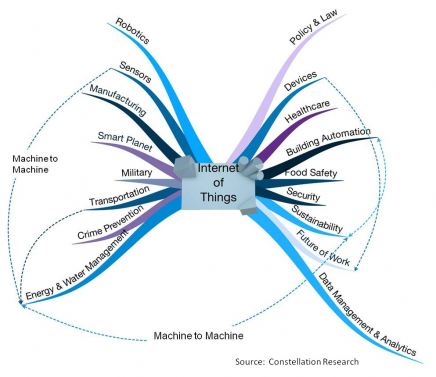Case Study: Internet of Things
 The concept of an Internet of Things means connecting objects or machines to the Internet so that data can be collected, shared and refined into wisdom to support a higher human quality of life.
The concept of an Internet of Things means connecting objects or machines to the Internet so that data can be collected, shared and refined into wisdom to support a higher human quality of life.
“Things” are anything and everything whose status can be read by sensors or determined and controlled electronically. Via the Internet, Things will be able to communicate with each other and make decisions without human intervention.
Applications and data can be stored and accessed from the Cloud. Decisions made by people, applications or other machines can be issued as commands to control Things.

Where does MRAM fit into the Internet of Things?
As a fast-write, non-volatile memory, MRAM potentially has many applications in support of the Internet of Things.
Many IoT applications will be functioning in intermittent access or batch mode
- MRAM is perfect for applications where fast-write working memory data must be continually updated yet preserved between batch read accesses or when power is lost.
IoT applications in which periods of standby are frequent or of long duration, yet instant-on is required
- For an application to be instantly ready for operation, access to data as well as code is critical.
- MRAM is non-volatile and will preserve data for up to 20 years, yet has a very fast on-time to write.
Very Low Power Battery-Powered Equipments
- For maximum battery life the equipment must spend a lot of time in deep sleep mode.
- MRAM can be powered down completely; zero energy consumption, yet data are non-volatile and MRAM has a very fast power-up write time.
